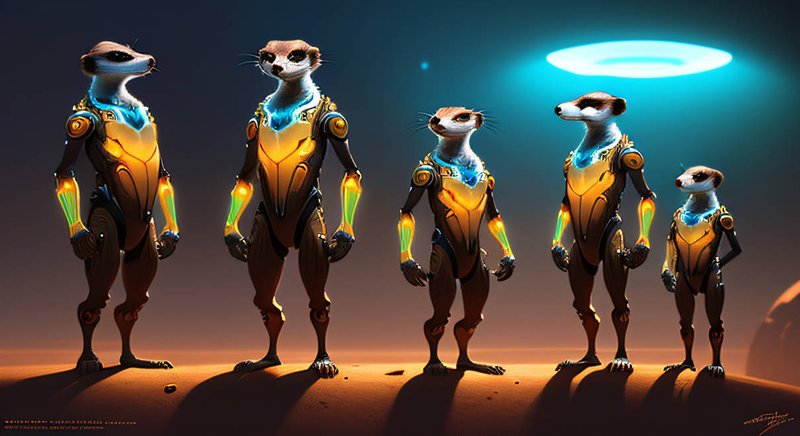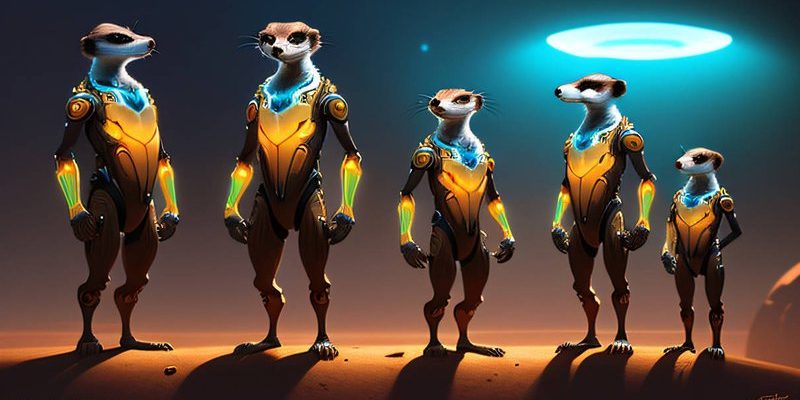
Meerkats belong to the mongoose family and are primarily found in southern Africa. They’ve adapted to their environment in unique ways. What’s even more interesting is how they’ve evolved over time—shedding light on their social structures, foraging habits, and survival strategies. Honestly, understanding their evolutionary journey helps us appreciate not only meerkats themselves but also the incredible tapestry of life they are a part of.
Origins of the Meerkat: A Look Back in Time
The story of meerkats begins millions of years ago. They are part of the Herpestidae family, which includes all kinds of mongooses. The first mongooses are believed to have appeared about 30–35 million years ago. These early ancestors were small, carnivorous mammals that roamed the lush landscapes of Africa and Asia. Over time, they spread to various habitats and began adapting to differing climates and temperatures.
You might be wondering how these early creatures turned into the meerkats we know today. As they evolved, different species branched off, eventually leading to the meerkat’s unique traits. Over the years, they developed a more social lifestyle compared to their solitary relatives. This new way of living provided them with enhanced protection from predators and better access to food.
One significant milestone in their evolution was the development of their characteristic upright posture. Meerkats can stand tall on their hind legs, which allows them to spot potential threats from a distance. Imagine a meerkat acting as the neighborhood watch—its ability to scan the area is crucial for the survival of the entire group!
Social Structure: The Heart of the Meerkat Community
When it comes to meerkats, one of the most striking features is their social behavior. They live in groups called mobs or clans, which usually consist of 20 to 50 individuals. The social structure is quite fascinating—meerkats have a matriarchal system, where a dominant female leads the group. Here’s the thing: being part of a tight-knit community helps them thrive in their tough environment.
In these groups, each meerkat has a role to play. Some are responsible for babysitting the young, while others are tasked with foraging for food. The sentry duty, where one or two meerkats keep watch for predators, is especially important. When a predator is spotted, the sentinel will emit a warning call, alerting the rest of the mob. This system of checks and balances keeps everyone safe and sound.
Their cooperative behavior is quite remarkable. You might be surprised to know that meerkats will even share their food! This teamwork not only strengthens their relationships but also enhances their chances of survival. It’s almost like they have a built-in support network, ready to help each other out.
Adaptations for Survival: Thriving in Harsh Conditions
Surviving in the wild isn’t easy, especially in the unforgiving habitats of southern Africa. Meerkats have developed a variety of adaptations that make them well-suited for survival. For starters, they are excellent diggers! Their powerful claws allow them to burrow underground, creating intricate tunnel systems to escape the scorching heat and hide from predators.
You might be wondering about their diet too! Meerkats are omnivores, meaning they eat both plants and animals. Their meals primarily consist of insects, small rodents, and fruits. They’ve also learned to hunt scorpions, which is quite a daring feat considering the venomous sting! These adaptations are essential not just for their survival but also for their ability to thrive in a competitive ecosystem.
Another remarkable adaptation is their keen senses. Meerkats have excellent eyesight and can spot predators from afar, thanks to their elevated posture. They can also communicate through various vocalizations, making them sound like a tiny orchestra in the wild. Each call has a different meaning, whether it’s a warning or a call to gather for food.
Impact of Climate Change and Habitat Loss
Like many other species, meerkats face threats due to climate change and habitat loss. As temperatures rise and their environments change, they may struggle to find adequate food and shelter. You might not think about it, but the loss of grasslands and savannas impacts their way of life, pushing them closer to urban areas where they may be at risk from human interactions.
Additionally, the increasing frequency of droughts can lead to food shortages and water scarcity. Without sufficient resources, their social structures may weaken, and their populations could decline. It highlights the importance of conservation efforts aimed at protecting these remarkable creatures and their natural habitats.
Understanding the impact of climate change on meerkat populations is vital. It emphasizes that the challenges they face are not just about survival in the wild but also about the intricate balance of ecosystems. By supporting conservation initiatives, we can help safeguard their future.
The Role of Meerkats in Ecosystems
Meerkats play a significant role in their ecosystems. As both predators and prey, they contribute to the balance of the food chain. By controlling insect populations, they help maintain ecological equilibrium. Their foraging habits also encourage plant growth, as they dig up soil while searching for food. This activity can lead to the regeneration of vegetation in their habitats.
Moreover, meerkats themselves are a food source for larger predators, such as eagles and jackals. This relationship illustrates the interconnectedness of species in the savanna ecosystem. If meerkats decline, it could create a ripple effect, impacting numerous other creatures in the chain.
This interdependence among species underscores the importance of biodiversity. Protecting meerkats and their habitats ensures the health of the entire ecosystem, which ultimately benefits all forms of life—humans included.
The evolutionary history of the meerkat is truly a tale of adaptability, community, and survival. From their beginnings as small mongooses to their current status as social foragers in the African savanna, they illustrate the incredible power of evolution. Their unique adaptations not only help them navigate their harsh environments but also reveal the importance of social structures in nature.
As we learn more about these delightful creatures, it’s essential to recognize the challenges they face in today’s changing world. By understanding their evolutionary background and current issues, we can actively participate in conservation efforts to protect not just meerkats, but the ecosystems they inhabit. After all, every little creature plays a part in the grand story of life on Earth, and meerkats are no exception. So, the next time you see a meerkat standing tall, remember the incredible journey it has taken through time!

